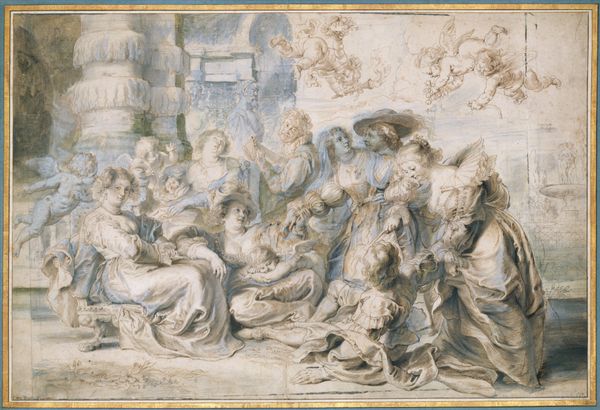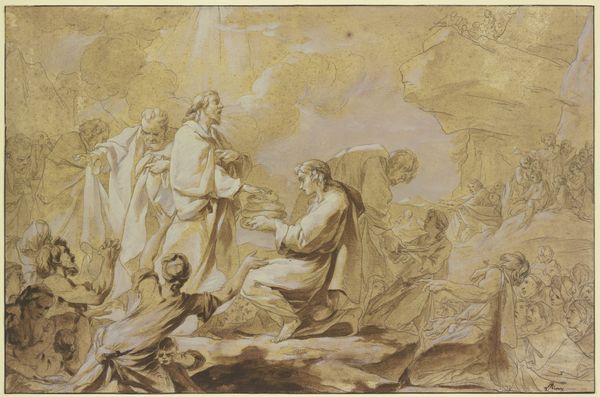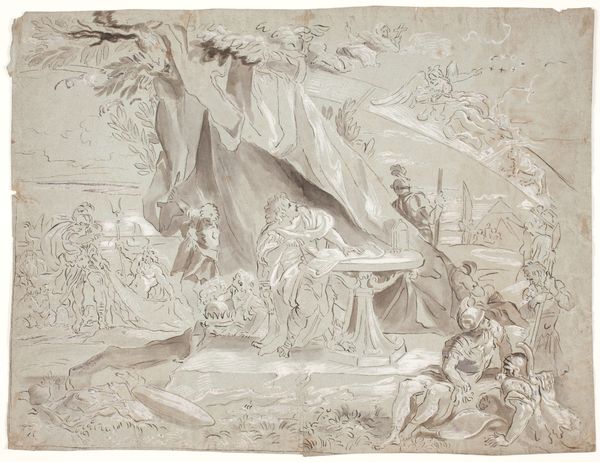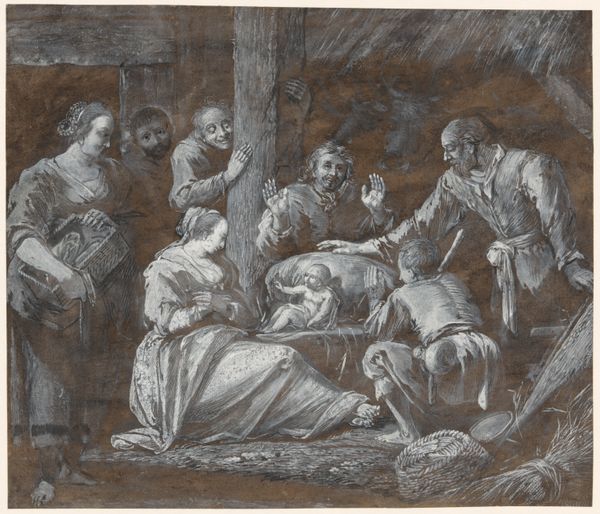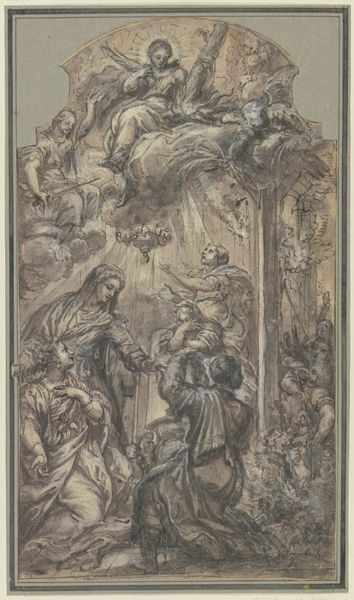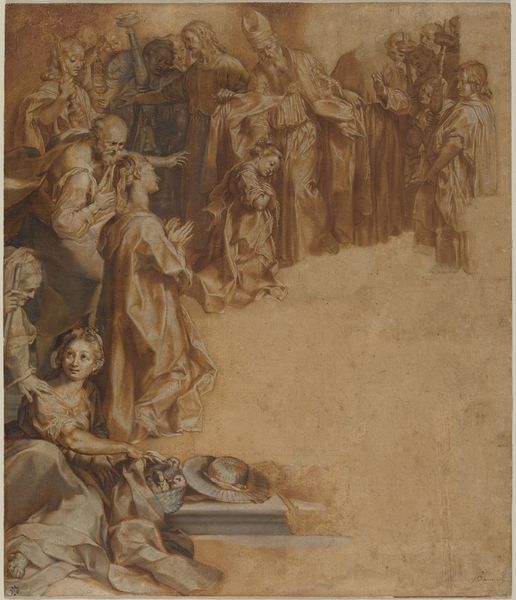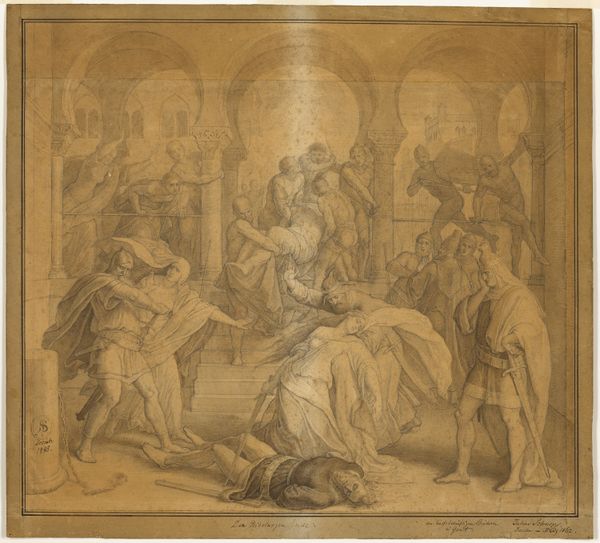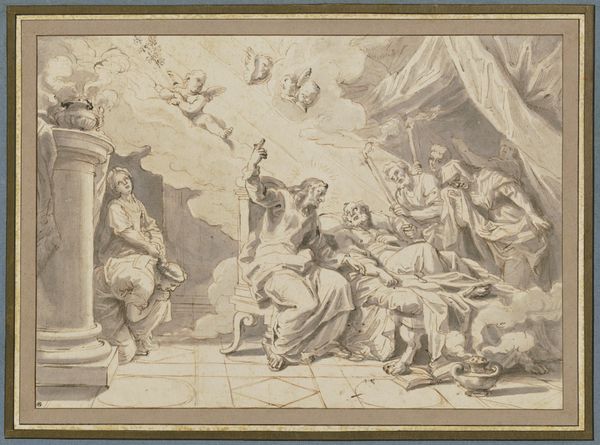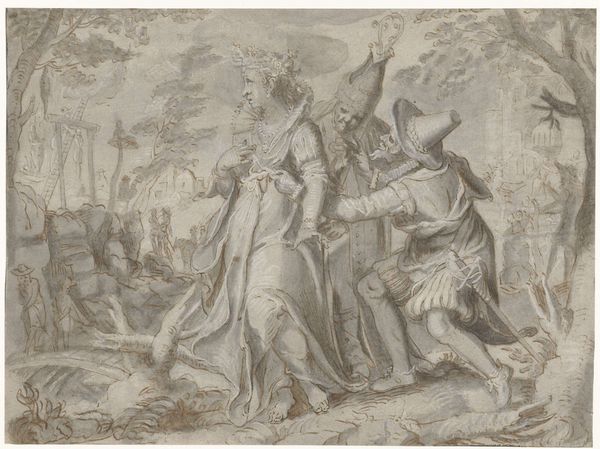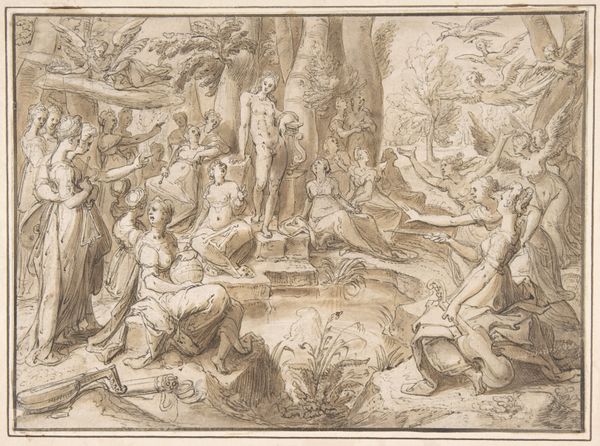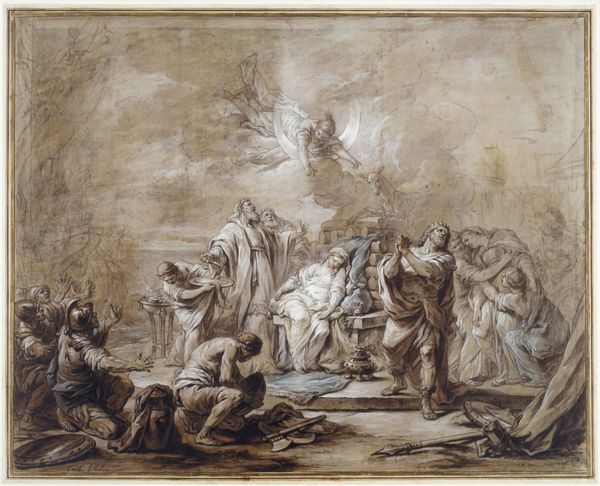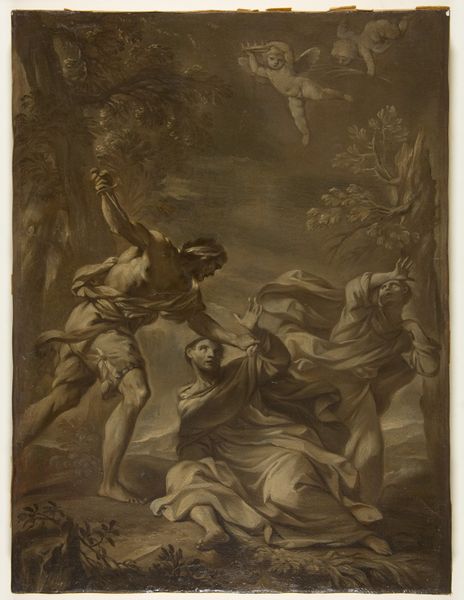
drawing, painting, print, oil-paint, watercolor
#
portrait
#
drawing
#
garden
#
allegory
#
baroque
#
painting
# print
#
oil-paint
#
landscape
#
figuration
#
oil painting
#
watercolor
#
cupid
#
group-portraits
#
watercolour illustration
Dimensions: 18 1/4 x 27 3/4 in. (46.3 x 70.5 cm) (including added strips at left and right)
Copyright: Public Domain
Editor: Here we have "The Garden of Love," or at least the left portion of it, painted by Peter Paul Rubens around 1633 to 1635. It seems to be executed primarily with oil paint. I'm immediately struck by the loose brushwork, particularly how the figures seem to blend into their environment. What do you make of this piece? Curator: Rubens’s mastery over the material—oil paint in this instance—is undeniable. Note the blending, yes, but consider *how* he achieves that. The build-up of layers, the subtle variations in pigment, each a careful, deliberate step in a much larger production. We need to examine how labor manifests in these lavish displays. Was this piece a commission, a gift, or something else? Editor: That's interesting. I hadn't really considered the production aspect. The Baroque era seems so focused on the final spectacle, not the steps it takes to get there. Was this just a question of his workshop at this point? Curator: Precisely! The 'spectacle' *is* the result of that labor process. Consider the relationship between Rubens and his workshop – the division of tasks, the flow of materials. Are we looking at the master's hand throughout, or the skilled contributions of his assistants? Understanding that informs our interpretation. What kind of consumer would have coveted something like this? Editor: I suppose that wealthy patrons saw such works as demonstrating their status and taste? The scale and intricacy communicate luxury in and of itself, and being seen owning this signaled sophistication and access to skilled artisans. Curator: Exactly. And how might the depiction of a garden here, of love, intersect with the consumption patterns of the era? Are we meant to aspire to that leisurely lifestyle, fueled by production and trade that may not always appear in the picture? Editor: I've never really looked at paintings like this through a material lens, more just symbols. I will now. Curator: Examining the means of its creation is crucial to understanding its place in society, who benefits from this, and the conditions in which art exists.
Comments
No comments
Be the first to comment and join the conversation on the ultimate creative platform.
